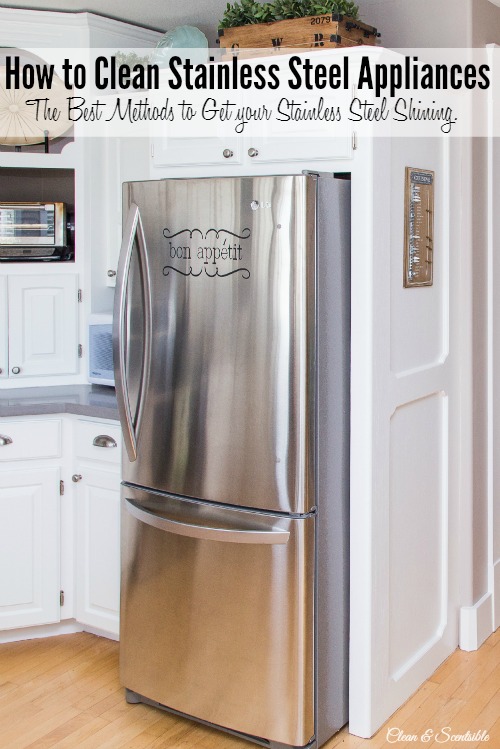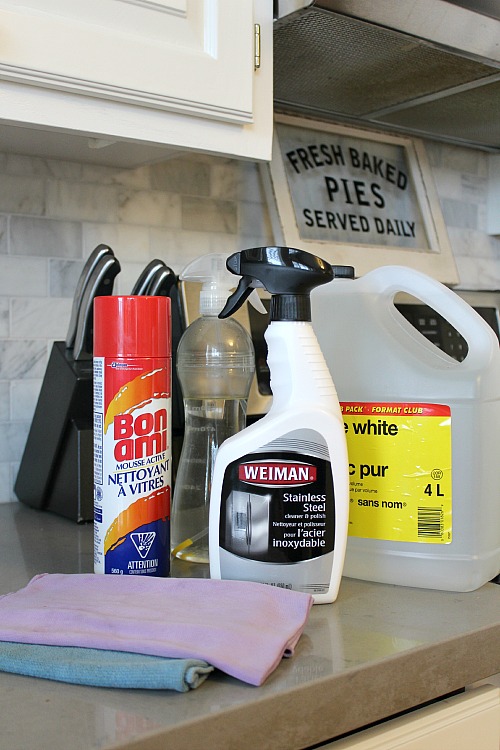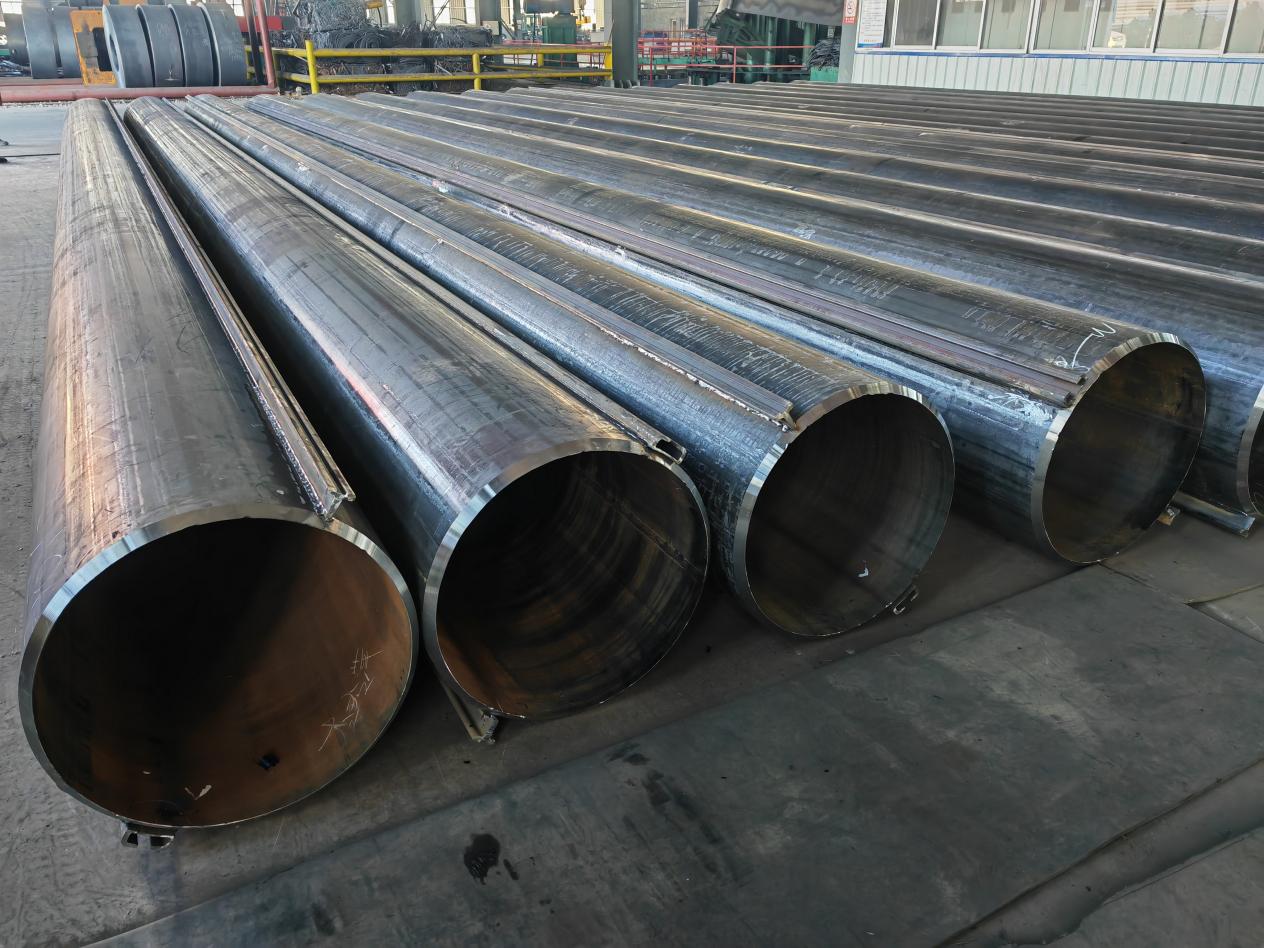One of the questions that I tend to get asked a lot is how to clean stainless steel appliances. Since we are working in the kitchen for this month’s Household Organization Diet, I thought that this would be the perfect time to answer it and have even been doing a little experimenting on our own stainless steel appliances as well.

First off, there are many different grades and types of stainless steel so what is best for mine, may not necessarily be best for yours. Even with our own appliances, I find that the stainless steel on our fridge and dishwasher cleans up much easier than the stainless steel on the oven. What I recommend is starting with the most economical cleaning option and expanding out from there if it is not working for you. I have really tried to cut back on the amount of cleaning supplies that I use and stick to green cleaners as much as possible. Finding cleaning products that serve multiple purposes will help to save you a lot of time, energy, and money, so look for products that you already have in your home first before going out and buying something new.
MY LATEST VIDEOS

No matter what cleaning method you use, there are a couple of general rules of thumb to follow…
- Do not let the cleaning agent dry on your stainless steel. Give it a wipe and buff it with a dry cloth.
- For the most part, less is more, so use your cleaning product sparingly. You can always add more, but using too much product can definitely eat up your time and will require more scrubbing and polishing to get it off.
- Wipe in the direction of the grain. For all of our appliances, this is side to side rather than up and down.
- Invest in good microfiber cloths as you will need them no matter what cleaning method you use. I use a Norwex polishing cloth and the Norwex cleaning cloths for 80% of my cleaning and have had the same cloths for about 3 years now. This is one time that the dollar store cloths just don’t cut it.
I generally just use the Norwex polishing cloth and a water bottle {filled with either plain water or a 50:50 mix of water and vinegar for extra cleaning power} to clean my stainless steel and will give it a quick wipe as part of my daily kitchen cleaning routine. If it is extra dirty and greasy, I will use a microfiber cloth first to scrub and then use the polishing cloth, but, honestly, that is rarely needed. While this works great on the fridge and dishwasher, it does leave a slight streaking on the stainless steel on the oven. For the most part though, it is pretty insignificant and, for the sake of time, that is usually all that I use.
TUBE FOR CONVEYANCE OF FLUID
I have seen a lot of other methods for cleaning stainless steel, so I thought that I would try them out and see if I could find something that would get my oven streak free. For each product, I smeared some butter over the surface, cleaning once using paper towels and once using the product and the micorfiber cloths. I tried to take photos of everything but the differences were sometimes hard to see in the photos so you will just have to trust me on this one! Here are the products and methods that I tested…

- 50/50 Water and vinegar – spray directly onto the stainless steel,wipe, and then buff with a dry cloth.
- Pledge – spray on lightly and wipe down. Buff with a dry cloth.
- Olive Oil {or baby oil or mineral oil} – apply the oil to a paper towel or cloth, wipe it on in the direction of the grain, and then buff off with a dry cloth.
- Weiman Stainless Steel Cleaner – Spray directly onto the stainless steel and wipe off. Buff with a dry cloth.
- Bon Ami Window Foam Cleaner – Spray a thin layer of foam onto the stainless steel and wipe off. Buff with a dry cloth.
So what were my results?
- Well, first of all, using the cloths vs. the paper towels, made a big difference with every cleaning method. So save those paper towels and invest in some good cloths! While I am hooked on my Norwex cloths (especially the polishing cloth), I have heard that ecloths and Cassabella also make good microfiber cloths.
- I didn’t find that the Pledge worked well for cutting through the grease but it did shine thing ups and worked okay on simple water marks.
- Not surprisingly, the olive oil didn’t work for cleaning; however, it did work great for shining things up once I had already cleaned it. I probably wouldn’t take the time to do this on a daily basis, but would try it if I wanted to give my kitchen an extra shine for those special occasions.
- I would have to say that the Weiman Stainless Steel Cleaner worked the best for getting rid of those little stubborn streaks on our oven. It also had a nice smell with no strong cleaning product odor which was a definite bonus.
- While the Bon Ami did an okay job of cleaning, it still left streaks on the oven and had a strong chemical odor that I didn’t like. I do have to say though, that it worked great shining up our glass top stove {although it doesn’t clean burned on messes}.
The Bottom Line.
All things considered, I still plan on sticking with my water/vinegar spray bottle and polishing cloth for my regular cleaning of our stainless steel. If you can’t tell, I LOVE my polishing cloths {and this is NOT a sponsored post in any way!} and love the fact that they can be used for so many other cleaning jobs as well {windows, glass, faucets, and any other surfaces that need a little shining up}. I will also be keeping the Weiman Stainless Steel Cleaner to use for occasional cleaning of the stove when I really need to get rid of those little streaks, and I can also see myself using the olive oil to shine things up if I was doing a deep cleaning and wanted things extra sparkling.
If you are still on the hunt to find the ideal method for your stainless steel, I would recommend getting a couple of good cloths {a regular micro fiber cloth and a polishing cloth} and just starting with the water spray or a water/vinegar mixture spray. If you are needing something a little extra for polishing, try the olive oil method since you probably already have that on hand and then move towards the other cleaners if needed. The Wieman was definitely my favorite out of the products that I tried and worked great for all of our stainless steel, but I know that there are many more stainless steel cleaning products on the market.
So what is your take? Do you have a favorite method that works for you? I’d love to hear them!
